The security situation in the last few weeks has been unprecedented for post-Cold War Europe, with a continued Russian military build-up around Ukraine’s borders fueling fears of an imminent new invasion, while tensions elsewhere in the region have been met with significant military movements by East and West, around the Baltic Sea and the Black Sea, in particular. What’s also been unusual about this situation has been the willingness of the United States and other NATO members and allies to share at least some of their intelligence concerning developments on the Russian side, likely with the aim of removing the Kremlin’s options to launch a surprise attack or some kind of false-flag operation directed against Ukraine.
Much of that intelligence, and a lot more besides, is being gathered on a daily basis by a diverse fleet of aircraft that are operating around these hotspots as well as directly over Ukraine and along the borders of Russia and its close ally Belarus. At the same time, this dynamic reinforces the continued importance of aircraft — manned and unmanned — thanks to their ability to provide the kind of persistent monitoring demanded by the kind of fluid situation that exists on the ground. While satellite imagery has already played an important role in understanding the scale of the Russian build-up, aircraft clearly still offer key advantages.
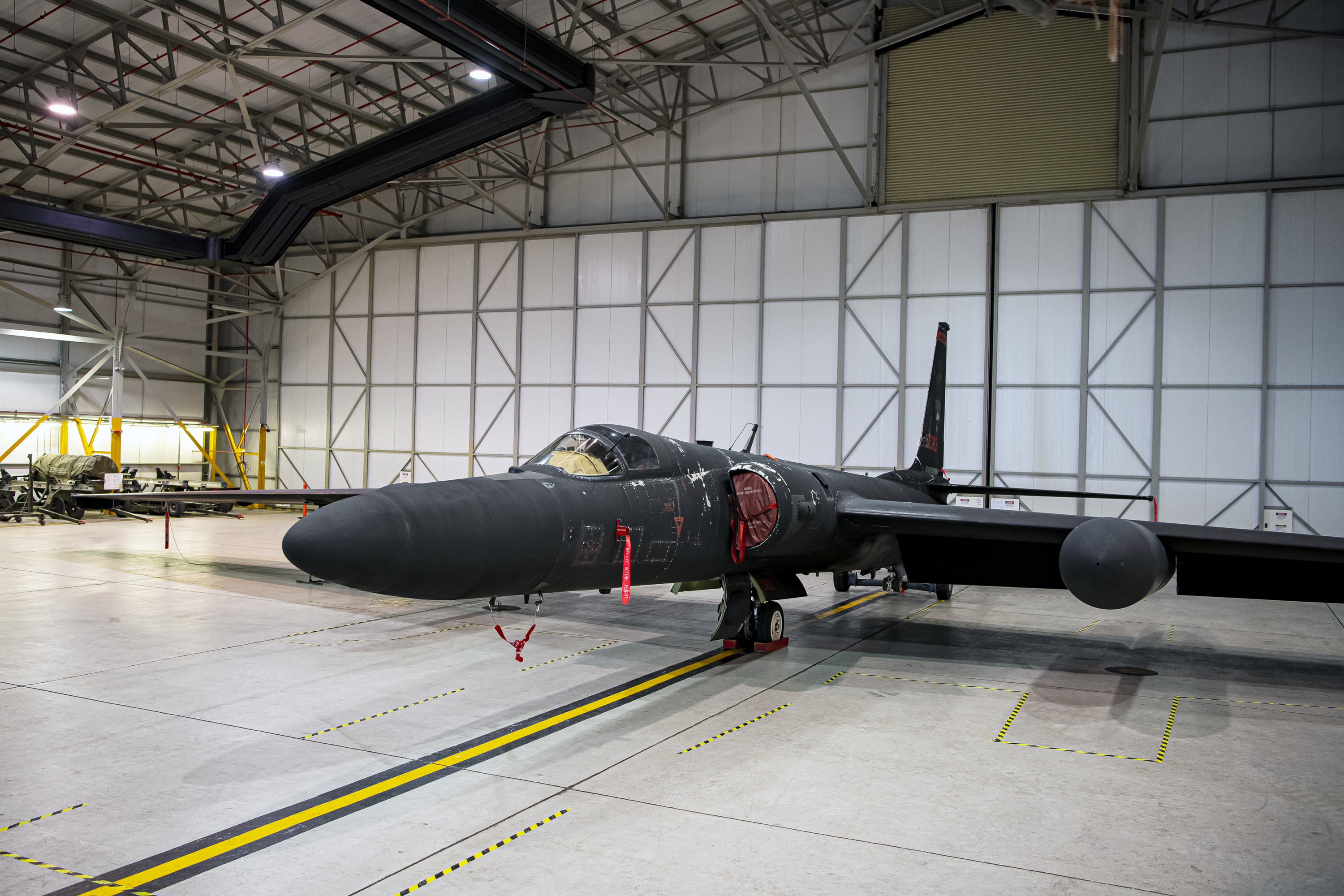
With the Kremlin still building up its forces in and around Ukraine, deploying now between 169,000 and 190,000 personnel, according to the U.S. Mission to the Organization for Security and Cooperation in Europe (OSCE), and despite claims of a partial Russian drawdown, these intelligence-gathering aircraft are as busy as ever. Indeed, it’s certain that air assets played a significant part in preparing this latest assessment, which represents a significant increase over the roughly 100,000 Russian troops in and around Ukraine as of January 30. According to Western estimates, the current situation includes 110 Russian battalion tactical groups (BTGs), the country’s primary ground combat formations, now around Ukraine, equivalent to around two-thirds of all those available to Russia.
Much, but by no means all of the aerial intel-gathering activities can be tracked in real-time using publicly available flight-tracking software and a growing cadre of open-source intelligence collectors who devote much time to making sense of these aircraft movements. These include Amelia Smith, or @ameliairheart, whose maps with overlaid flight paths and estimated sensor ranges appear in this article.
The airborne intelligence, surveillance, and reconnaissance situation over Europe as of yesterday, February 17, as collated by Amelia Smith:
Although these flight-tracking aids are not entirely accurate and can be vulnerable to spoofing, the sheer quantity of data of late makes it clear that NATO and other nations are keeping very close tabs on Russian force movements, with the aim of continually building the intelligence picture and, hopefully, getting advance warning of Russia’s next move — be it another partial withdrawal, as was the case last year, or something altogether more worrisome.
The following rundown does not aim to provide a comprehensive list of every airborne surveillance asset that’s been active over Eastern Europe in recent days but instead sheds light on some of the most important manned and unmanned platforms that have been especially busy around Ukraine of late. It’s important to note that almost all modern military aircraft have at least some ability to gather important intelligence, whether using onboard sensors designed primarily for other tasks, or the simple ‘mark one eyeball.’
Regardless, these are the aircraft that NATO and others are relying on primarily to keep them abreast of the sometimes-confusing situation on the ground and in the air around Ukraine, as well as other critical areas in the wider region, including the heavily militarized Russian exclave of Kaliningrad in the Baltic and Russian-occupied Crimea in the Black Sea.
E-8C Joint STARS
The U.S. Air Force’s E-8C is a battlefield management command-and-control aircraft that provides synthetic-aperture radar (SAR) imaging — taking image-like radar maps of the ground environment at standoff ranges — and ground-moving-target-indicator (GMTI) functions. This makes it especially useful for tracking the movement of vehicles — including heavy armor, artillery, and even long-range missiles, as well as air-defense systems — of which there has been an influx into areas close to Ukraine’s borders in the last few months.
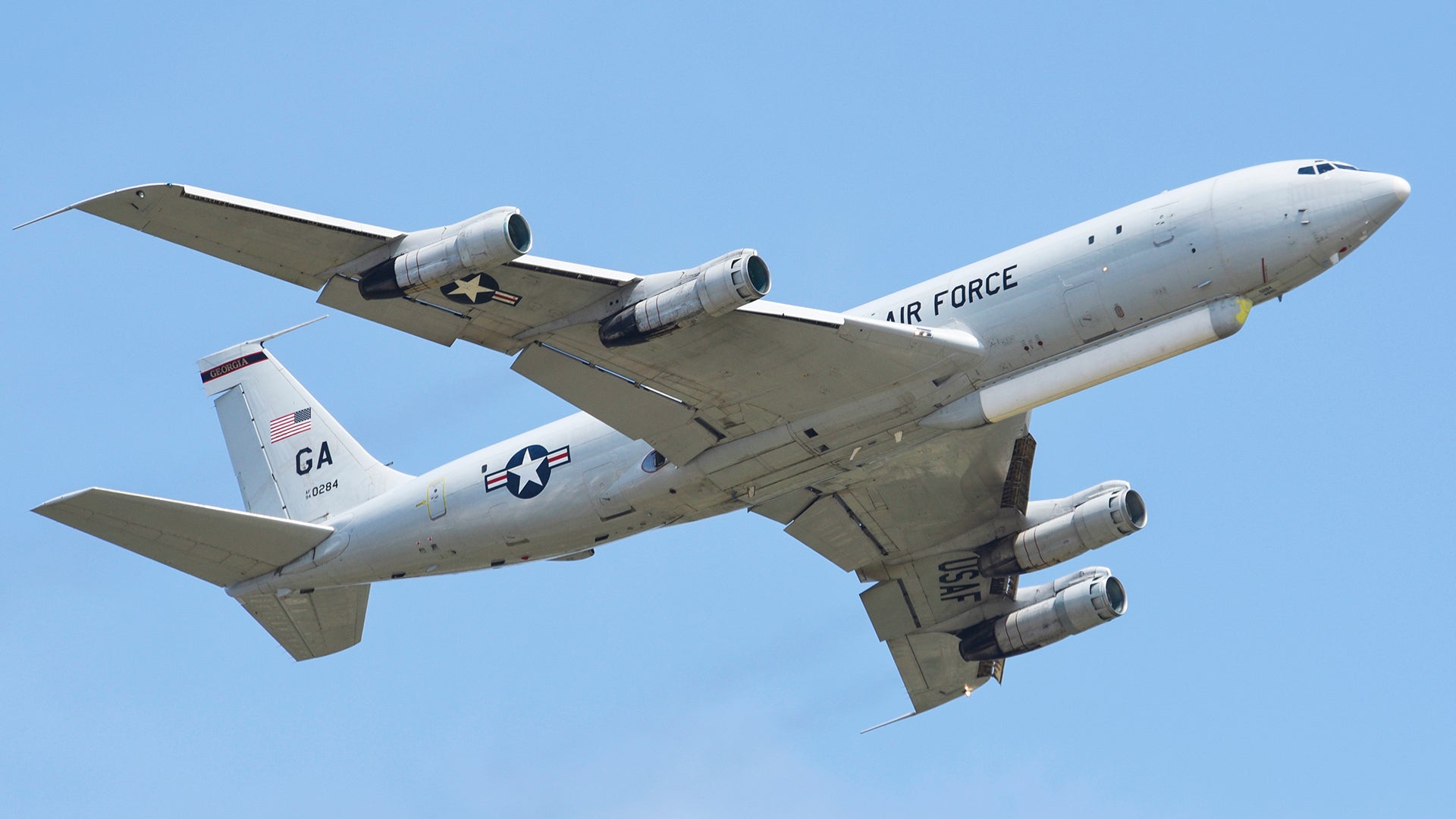
Flying with joint Air Force and Army crews, the E-8C’s capabilities make it an ideal asset to monitor the disposition of Russian forces close to the Ukrainian border, to get a better idea of Moscow’s intentions and capabilities. Because radar is not impacted by cloud cover, the E-8C can collect intelligence regardless of the weather conditions, day or night.
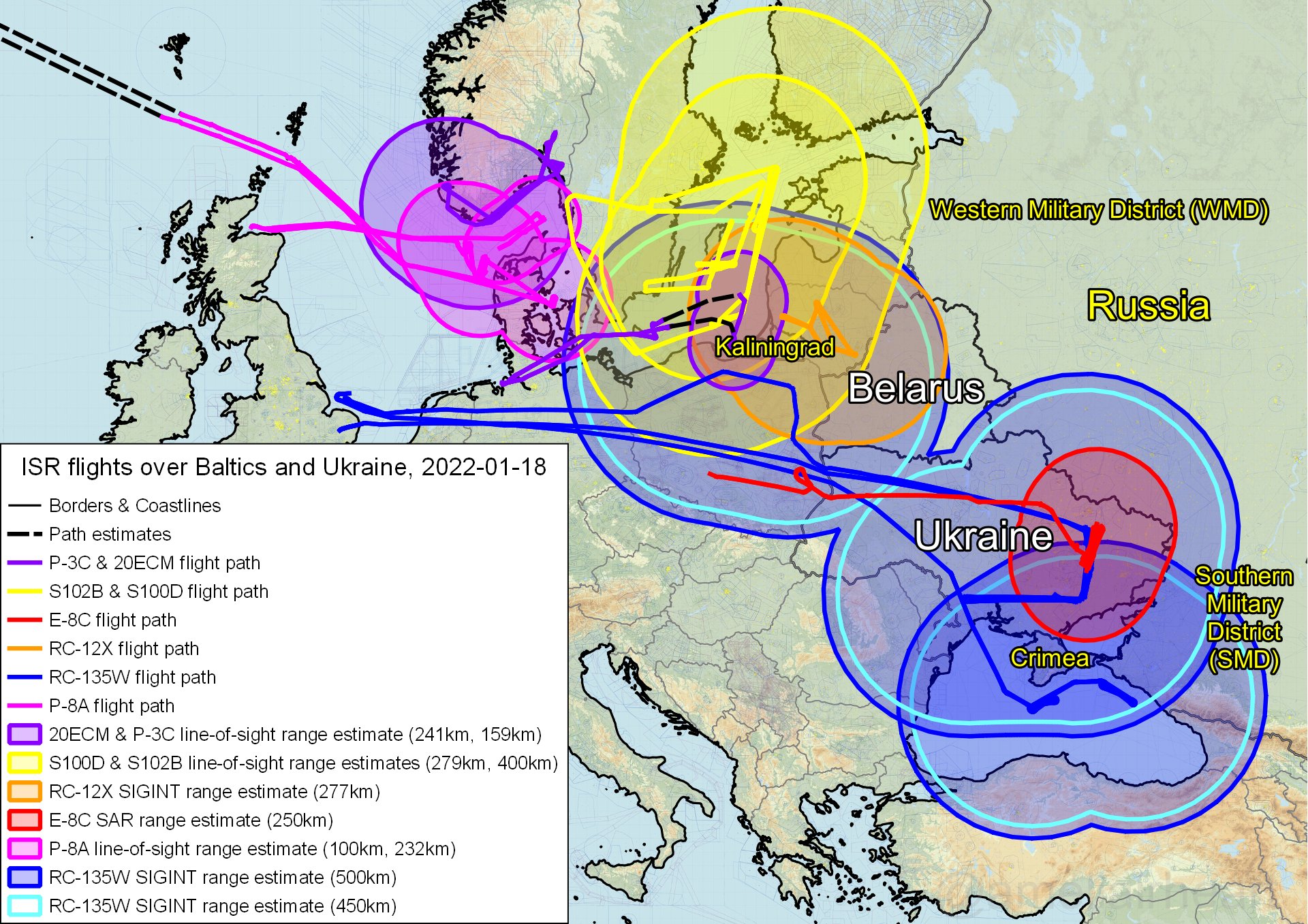
On more than one occasion, last December 27, an E-8C actually ventured deep into Ukraine. The JSTARS, operating out of Ramstein Air Base in Germany, used the callsign REDEYE6, and apparently flew several racetrack patterns over eastern Ukraine’s Donbas region, where Kyiv’s forces continue to battle Russian-supported forces in a long-running conflict. While Russia has several different vectors available for an invasion of Ukraine, sending its forces through this contested border region is certainly one option, especially for a more limited, lower-risk ‘land grab.’ You can read more about the various options Russia has when it comes to a military offensive in Ukraine in this recent report of ours.
Considering its value in scenarios like this, the fact that the Air Force is in the process of retiring its entire E-8C fleet might seem surprising. Nevertheless, with the aircraft already being withdrawn, and with a poor track record in terms of availability, questions have been about the continued availability of Joint STARS in Europe and potential gaps in coverage. Still, other assets can do some of the E-8’s job and its true replacement will likely be a diverse ecosystem of platforms of varying capabilities with a high-flying stealthy drone capable of penetrating into or very near enemy airspace as its centerpiece.
RC-135V/W Rivet Joint
Operated by both the U.S. Air Force and the U.K.’s Royal Air Force, the RC-135V/W is a signals intelligence specialist. It carries systems to geolocate and categorize radars and other radio frequency-emitting systems, which would allow the Rivet Joints to help build an accurate electronic order of battle of Russian forces. This would include the locations and types of enemy radars, communications nodes, electronic warfare systems, and other transmitters. As a result, the Rivet Joint can also locate ground formations and assess their activities via their emissions.
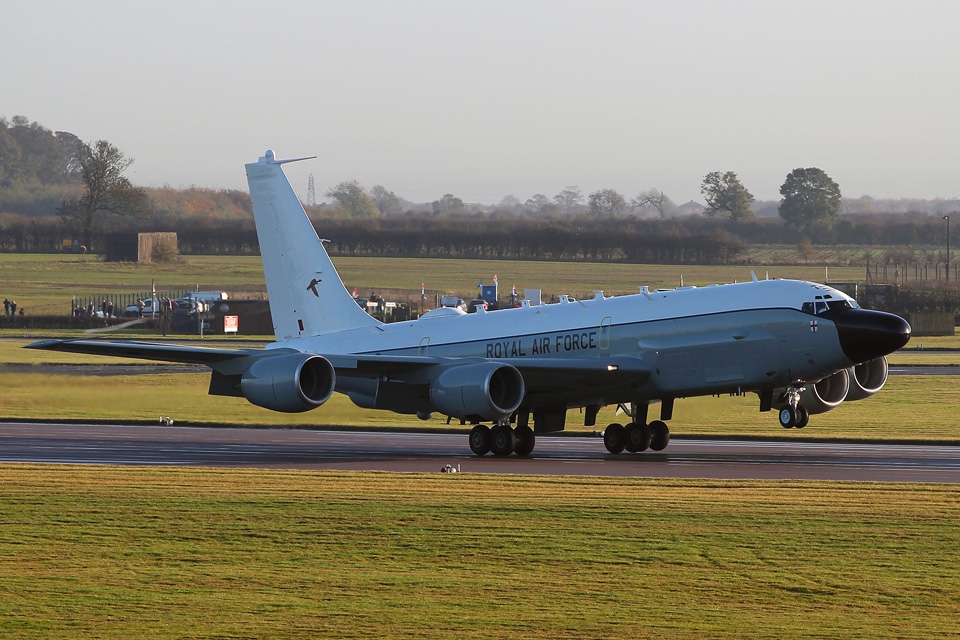
The Rivet Joint is also capable of listening in on enemy communications chatter, which analysts and linguists onboard can then exploit in real-time before passing on to other units. Like in the aforementioned E-8C, the crews of the RC-135V/W are capable of immediately beginning to process and disseminate intelligence as they gather it, which helps speed up the flow of potentially time-sensitive or actionable information.
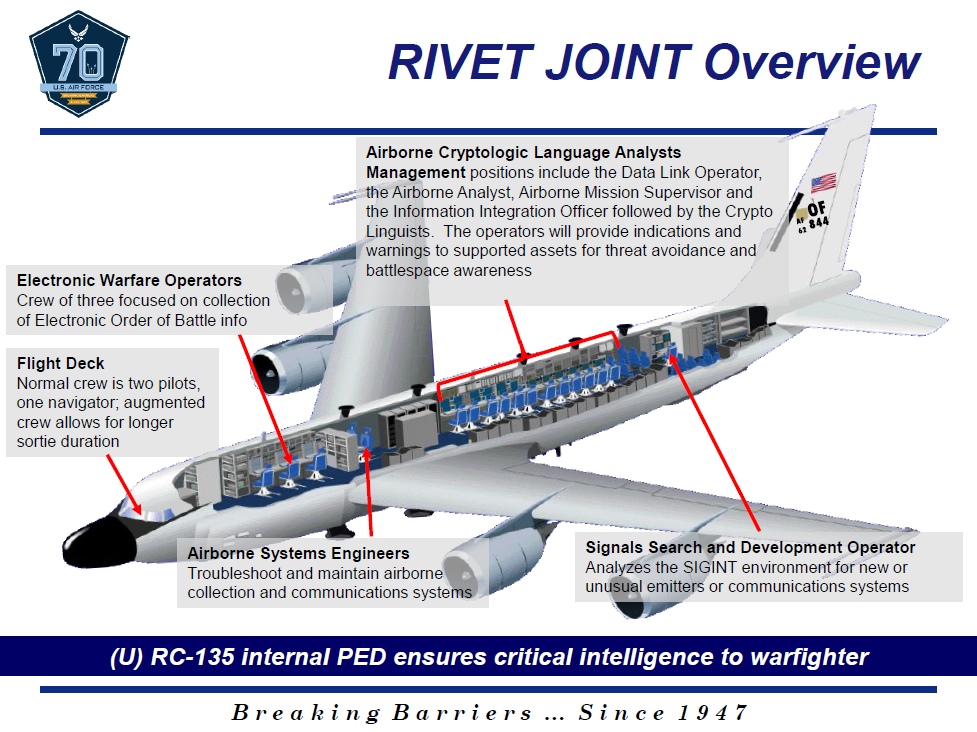
During the December 27 mission that we reported on at the time, an RC-135V joined an E-8C over eastern Ukraine. Using the callsign HOMER19, the Rivet Joint, which was flying from Souda Bay on the Greek island of Crete, appears to have approached to within around 40 miles of territory occupied by Russian-backed forces in the Donbas region. Other recent missions have been flown over Europe from RAF Mildenhall, England, which serves as a forward operating location for the 55th Wing that is responsible for the entire U.S. Air Force RC-135V/W fleet. All told, the Rivet Joints are a regular visitor over the Black Sea, having a near-continuous presence there in recent years and especially in the last few months.
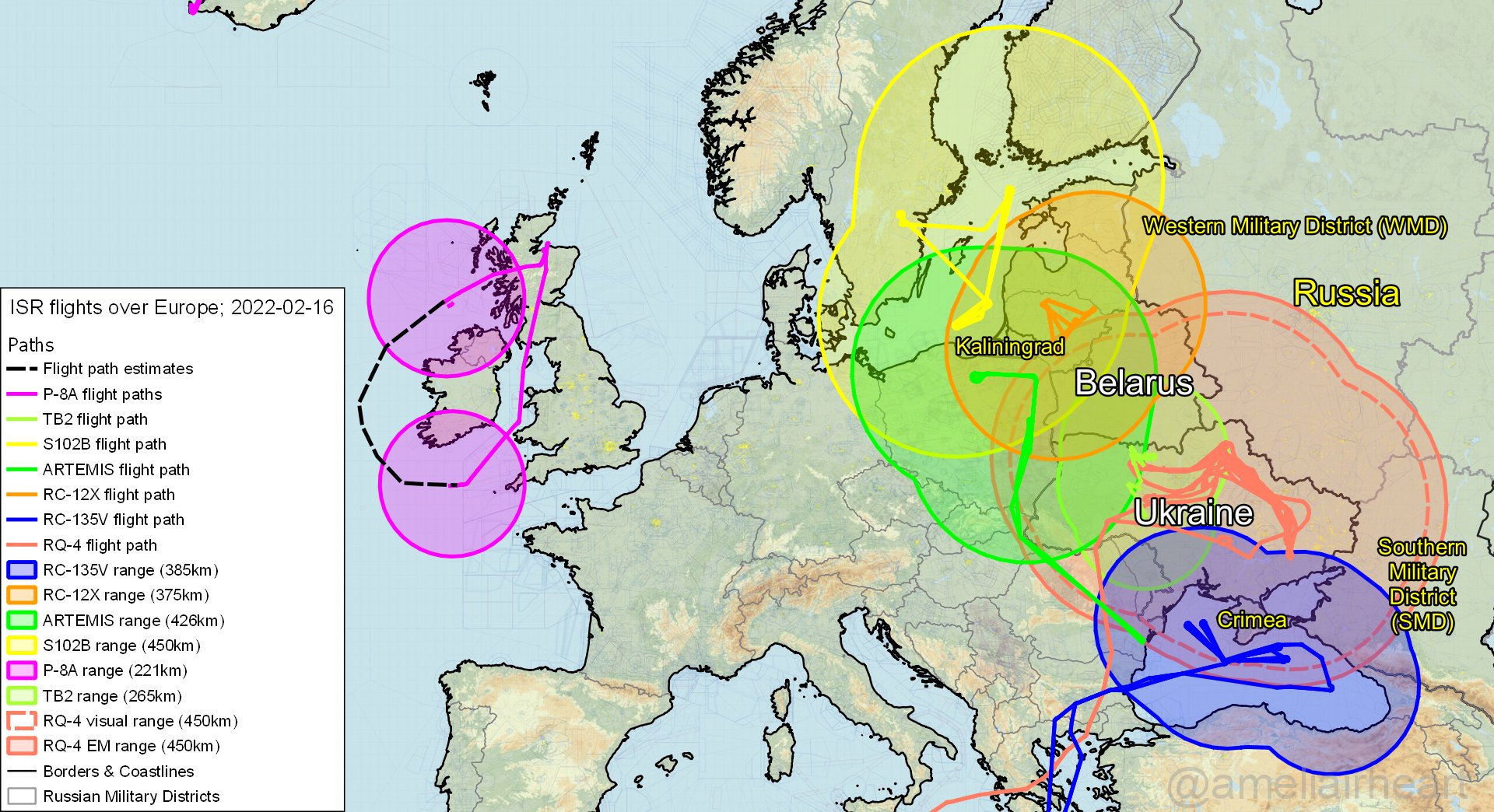
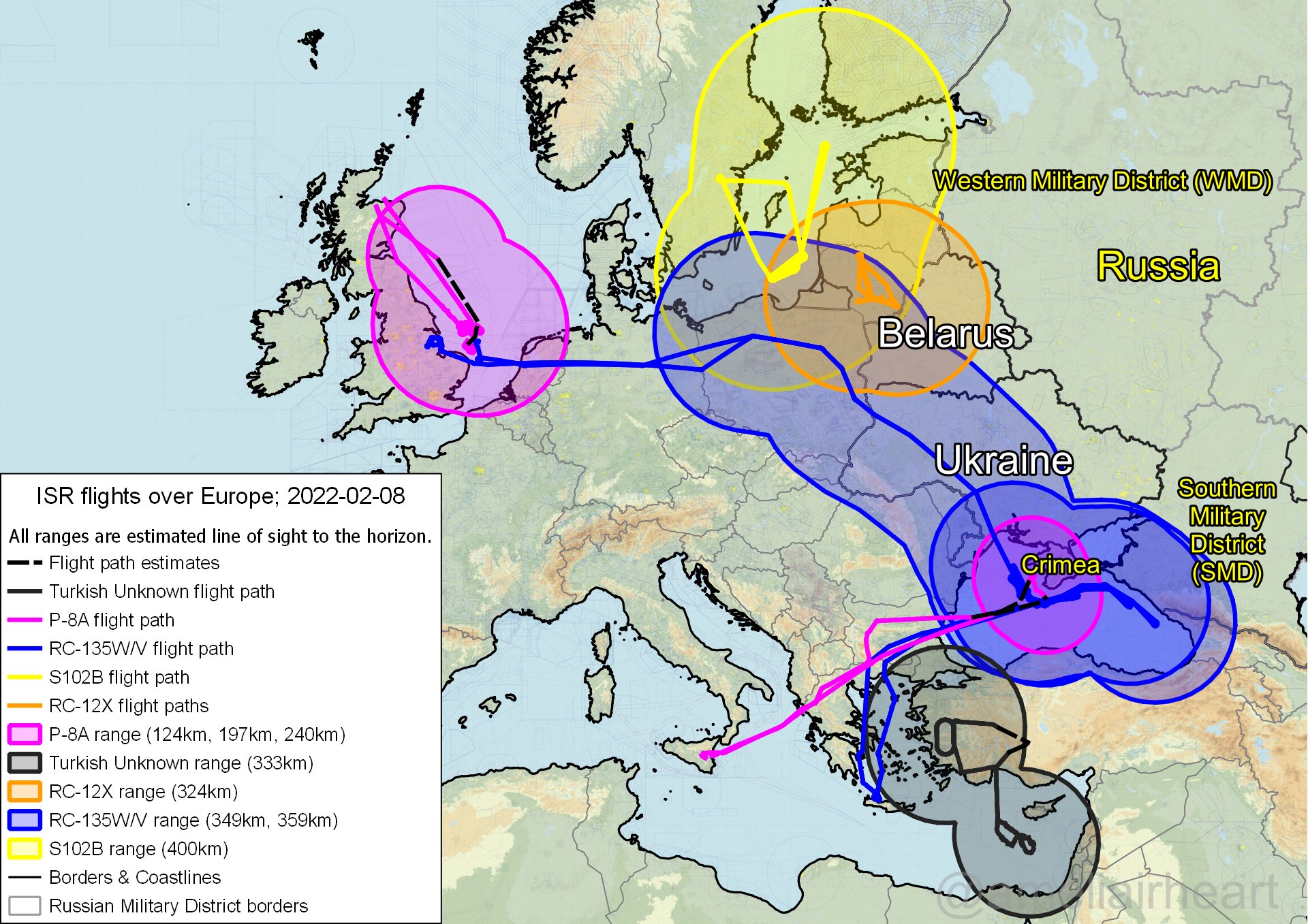
The importance of the Rivet Joint means that these aircraft have also been appearing showing up over Europe in recent days, appearing on flight-tracking software in other locations where Russian forces have been notably active, or recently reinforced, including the Baltic and the Black Sea regions.
Furthermore, in the event of any spillover of a wider conflict, the kind of information being gathered by the Rivet Joints about the current situation could be very useful to NATO forces in theater. Critical data might include the locations and posture of Russian air defenses, as well as other systems related to anti-access/area denial (A2/AD).
At the same time, the RC-135V/W fleet has also faced challenges in terms of maintenance and availability, with the RC-135W, in particular, having one of the worst readiness rates in the Air Force.
RC-135U Combat Sent
The U.S. Air Force’s two Combat Sents are equipped to detect and analyze electronic emissions from sites on the ground. Like their Rivet Joint cousins, one of the most important things they bring to combat commanders is the ability to localize and determine the relative capabilities of radar installations, providing vital clues about the actual capabilities of an air defense network, like the one that Russia would establish for an operation in Ukraine, as well as the pre-existing air defense networks, some of which will already overlap Ukrainian territory. In fact, they are totally specialized for this exact role, making them an especially potent intelligence collection tool for surveilling an enemy’s air defense capabilities.
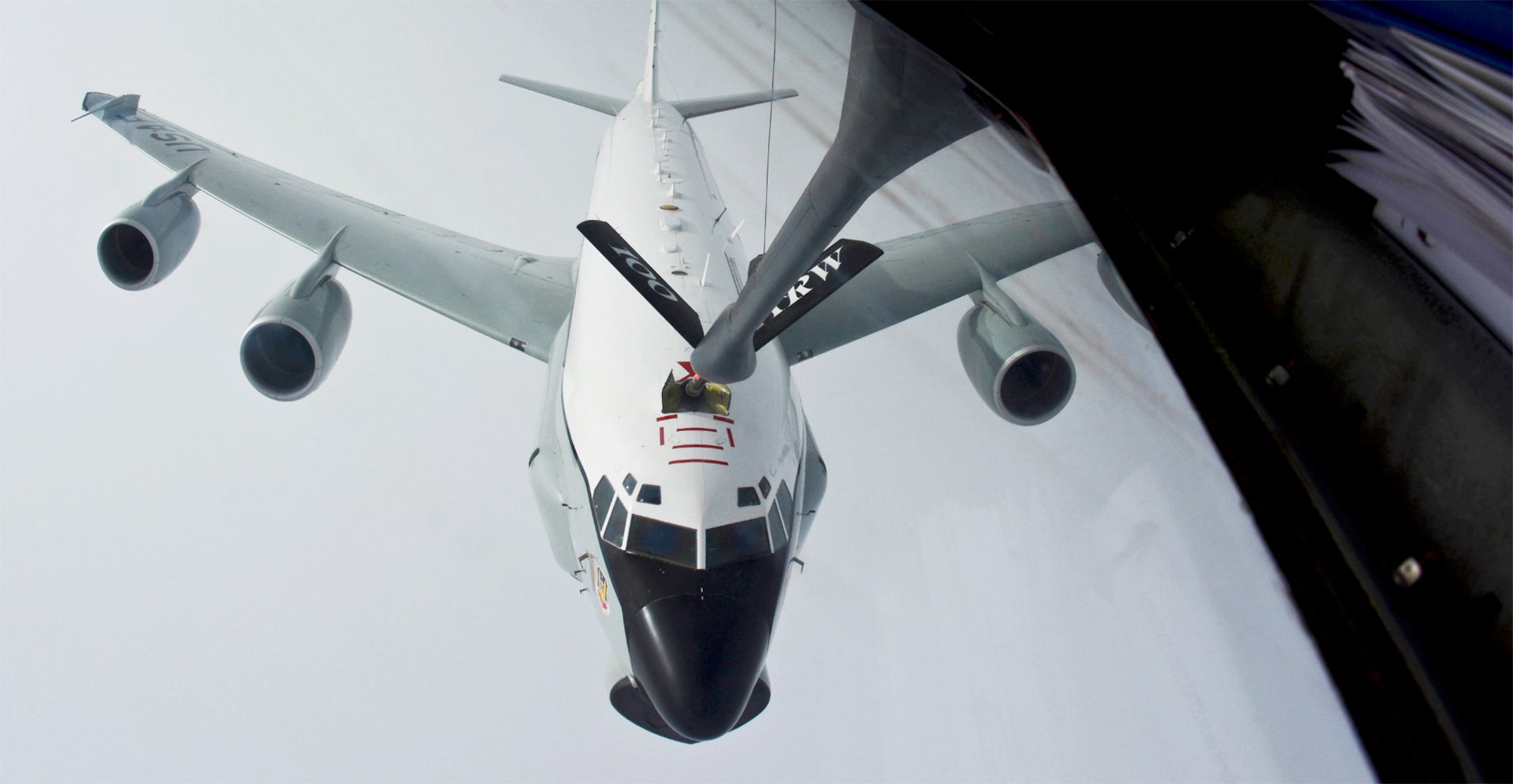
Apparently for the first time during the current spike in tensions, an RC-135U appeared over the Black Sea earlier today, having launched from Souda Bay.
Another C-135 variant has also been active over Europe in recent days, in the shape of the U.S. Air Force’s ‘nuclear-sniffer’ plane, which carries sensors that detect unusual shifts in levels of radioactive particles in the atmosphere. This one-off aircraft can also be employed after nuclear weapon tests and atomic accidents to help gather information about those events and track the potential spread of dangerous radioactive material. However, a spokesperson from Air Force Technical confirmed to The War Zone that “The WC-135 Constant Phoenix sortie over the Mediterranean Sea was a long-planned, routine mission, and is unrelated to any emerging situations in the region.”
U-2S
The ‘Dragon Lady’ was once expected to be superseded by the RQ-4 Global Hawk, but its unique intelligence-gathering capabilities and flexibility have so far proven impossible to replace.
Despite operating at 70,000 feet or more, the U-2 is vulnerable to modern air defenses and instead operates around the edges of international airspace, remaining on station for hours on end, and peering deeply into the country of interest.
U-2S operations at RAF Fairford in 2020:

The U-2’s ability to carry various sensors packages is likely unrivaled and among its intelligence tools are the Advanced Synthetic Aperture Radar System-2 (ASARS-2) and the Senior Glass electronic intelligence suite. While ASARS-2 gathers radar imagery, Senior Glass hoovers up electronic emissions, including radio chatter. Optical sensors are still part of the U-2 repertoire, including the wide-angle Optical Bar Camera and the Senior Year Electro-optical Reconnaissance System 2 (SYERS-2) that comprises long-range, hyperspectral cameras.
Information gathered by the U-2 can be relayed to the ground in near-real-time, via satellite data links, known as Senior Span and Senior Spur, or via a line-of-sight downlink to receivers on the ground or at sea.
A detachment of U-2s is regularly stationed at RAF Fairford, England, from where they are able to venture across Europe. These aircraft don’t commonly show up on flight-tracking aids when flying operational profiles, but in recent days they have been routinely flying long-duration missions out of Fairford. These are likely monitoring the situation in Ukraine as well as in the Baltic, Mediterranean, and Black Seas.
RQ-4 Global Hawk
While the future of the bulk of the U.S. Air Force’s high-altitude, long-endurance Global Hawk fleet is far from certain, this remains the most advanced unmanned system currently being employed operationally by the service, at least in the non-classified realm. In its Fiscal Year 2021 budget request, the Air Force asked for approval to retire all 21 of its remaining Block 20 and Block 30 Global Hawks, which will leave just the more advanced Block 40 versions.
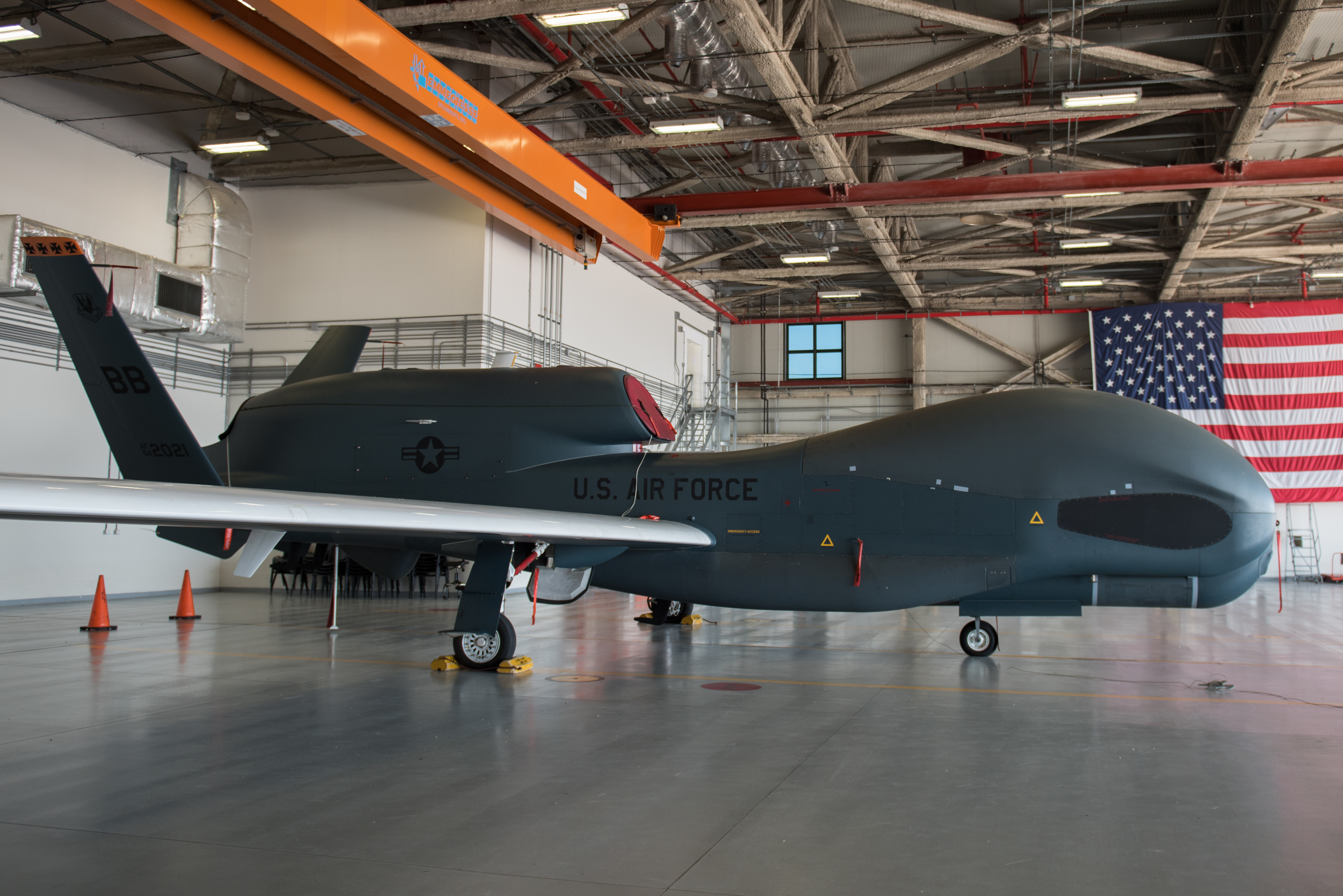
The RQ-4s is equipped with a comprehensive suite of electro-optical, radar, and electronic intelligence-gathering systems that are optimized for high-altitude operations. Flying at around 60,000 feet, the RQ-4 can operate well away from Russian territory and use its slant angle to peer into the areas of interest on the other side of the border. The Block 40’s powerful AN/ZPY-2 multi-platform radar technology insertion program (MP-RTIP) AESA radar can provide highly fidelity SAR imagery, as well as GMTI tracking functions, like the aging E-8 JSTARS.
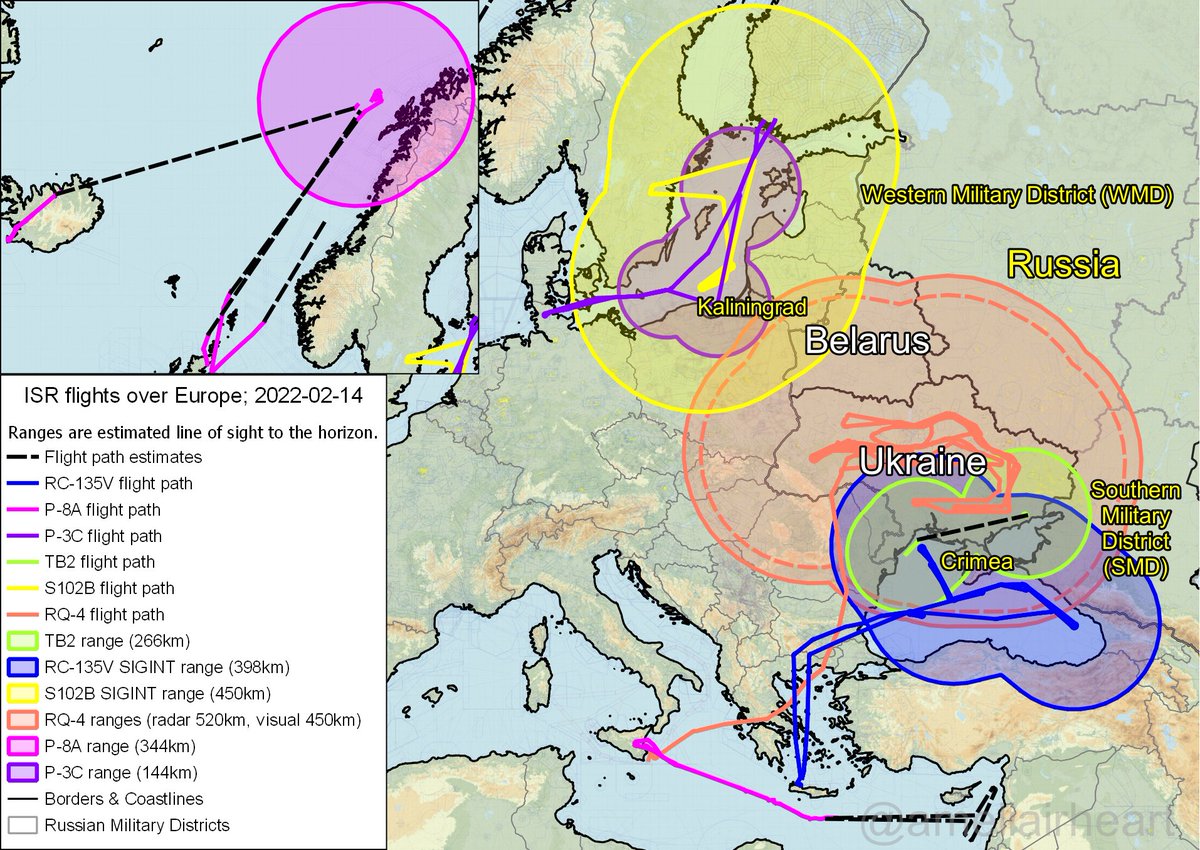
Examples of these drones have made some marathon flights in recent weeks, venturing across Eastern Europe including extensive patrols over Ukraine launched from Sigonella on the Italian island of Sicily. Like the Rivet Joints, RQ-4s are staples in the airspace over the Black Sea and even Ukraine, with multiple missions taking them on major collection runs just this week.
The Global Hawk’s ability to stay airborne for very long periods of time, paired with its multi-intelligence collection capabilities, makes it extremely useful for surveilling areas over time, which can provide highly unique and valuable intelligence insights.
MQ-9 Reaper
Other drones appear to have been employed around the Black Sea to a more limited degree, including the U.S. Air Force MQ-9 Reapers that are also operating from Sigonella.
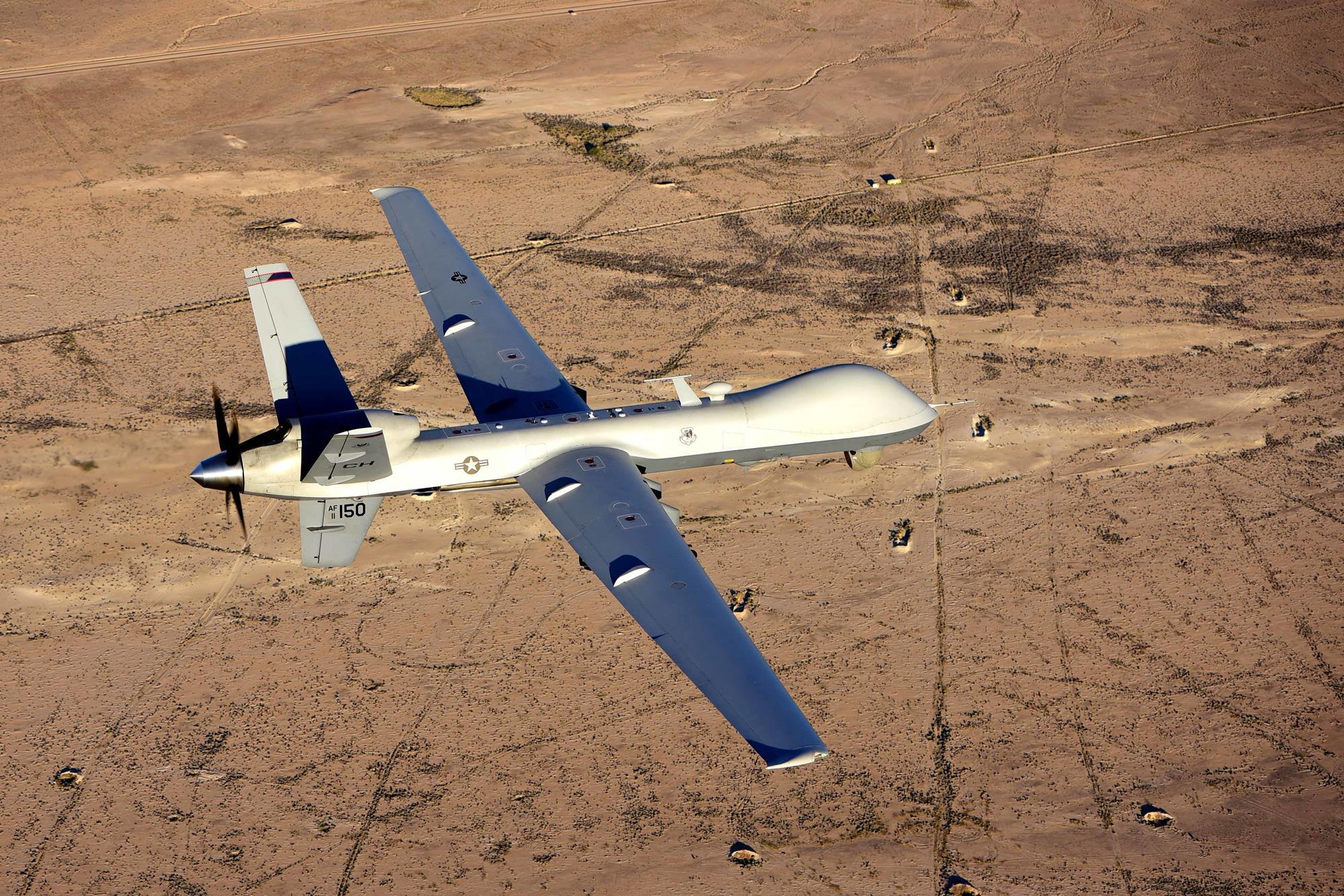
Exactly how often these drones are being used around the Black Sea is unclear, since they seem to appear only rarely on flight-tracking software. It should also be noted that the Air Force has an MQ-9 presence at Câmpia Turzii in Romania, from where they also have access to Ukraine and the Black Sea.
EP-3E Aries II
The U.S. Navy’s EP-3E, a derivative of the P-3 Orion maritime patrol aircraft, garners much less attention than the U.S. Air Force’s spy planes. However, the Aries II plays a very important intelligence-gathering role, and it’s optimized for the maritime/littoral domain. The aircraft is equipped to gather real-time tactical signals intelligence, including intercepting communications and locating and classifying emitters, including those related to integrated air defense systems.
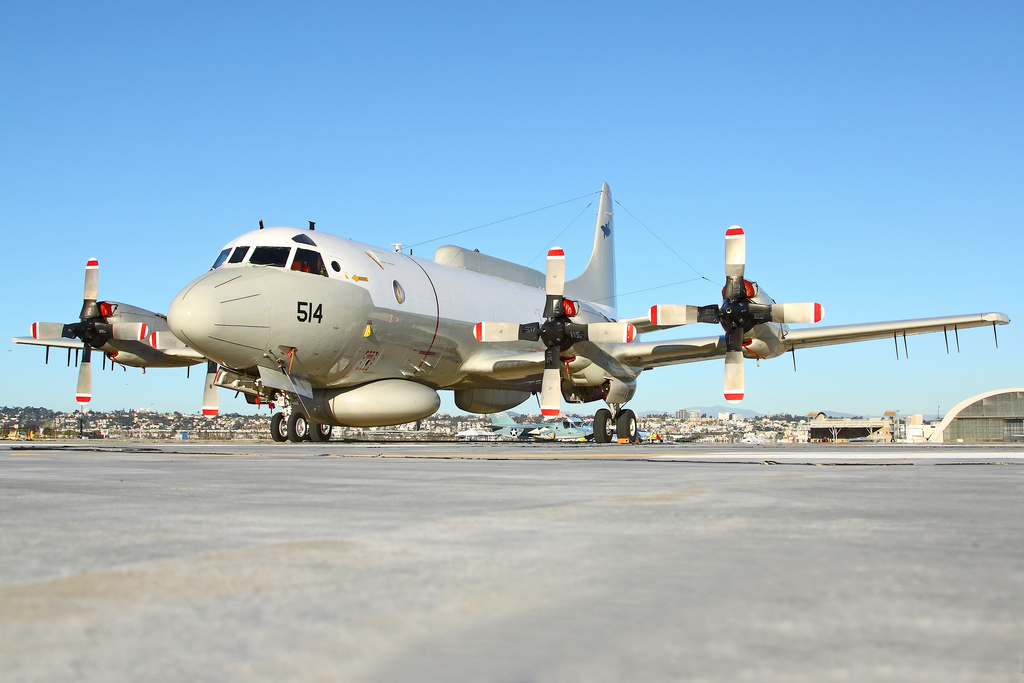
Flight-tracking software reveals recent EP-3 missions over the Black Sea, flown out of Souda Bay. This would put the aircraft in position to monitor Russian Navy vessels underway in these waters, including the six amphibious landing ships that entered the Black Sea earlier this month. At the same time, patrols over the Black Sea would allow the EP-3 to keep an eye on wider Russian military activities in Crimea, which has long been earmarked as a potential launchpad for a new invasion into southern Ukraine.
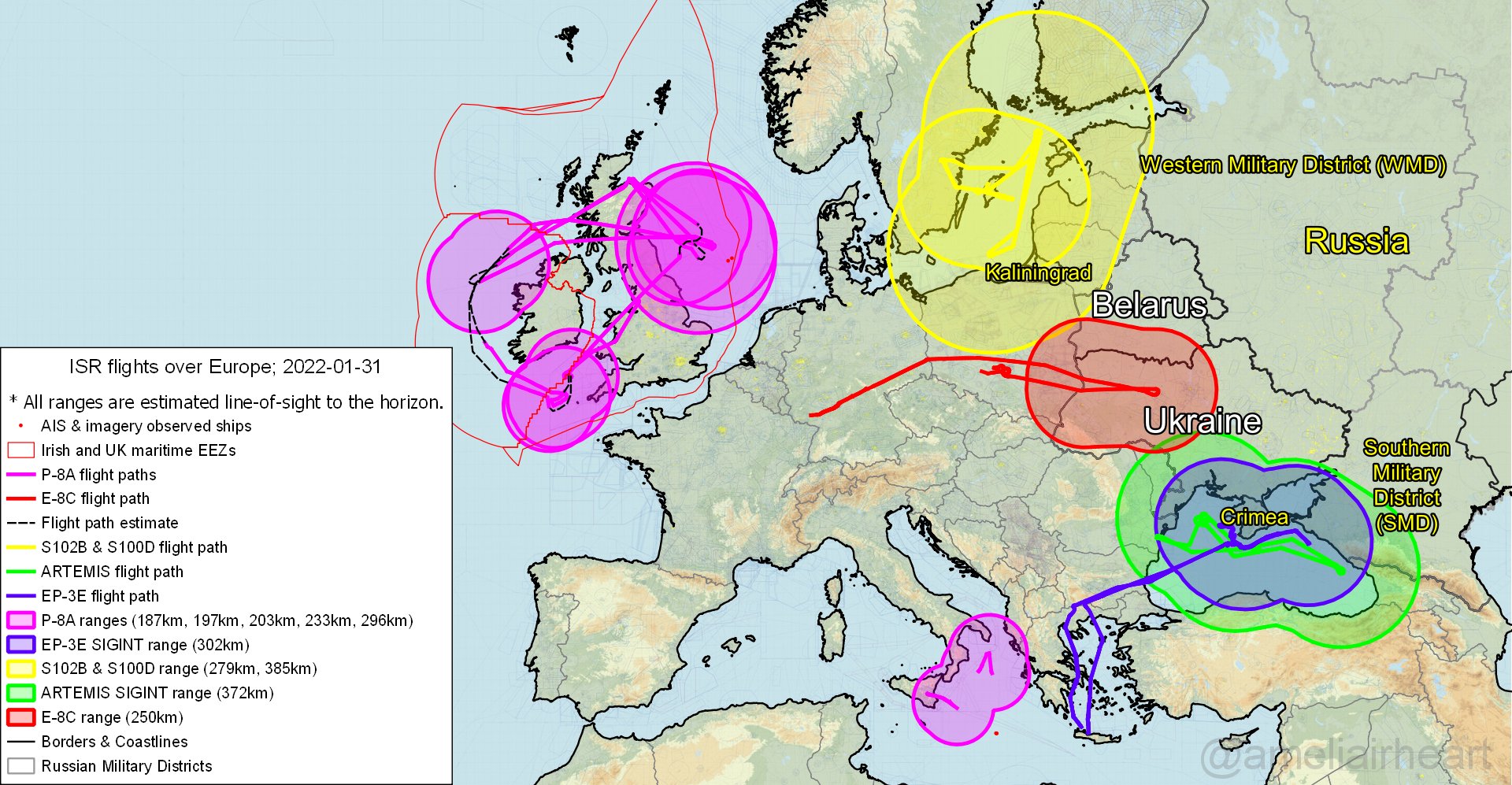
In the past, the EP-3 has had a track record of close encounters with potentially hostile aircraft, most famously the collision with a Chinese J-8II fighter over Hainan Island in the South China Sea in 2001. Since then, there have been incidents involving Russian fighters in the Mediterranean, and over the Black Sea, the latter leading to Russian protests that the EP-3 was spying on Crimea.
P-8A Poseidon
Operated in Europe by the U.S. Navy and Royal Air Force, the P-8A is a multi-mission maritime aircraft, meaning its mission spectrum is far wider than just maritime patrol.
While the Poseidon is equipped with the equipment needed to hunt submarines and surface ships, their full-motion cameras that work during the day or at night, and powerful radar, are equally useful for surveillance, including scoping out objects of interest along the coastline. Yet one of the aircraft’s most in-demand features is its powerful electronic intelligence suite that can do some of the things other dedicated surveillance platforms can, such as detecting, geolocating, and classifying hostile emitters.

In addition to its baseline sensors, the U.S. Navy’s P-8s are increasingly adding new capabilities, like the Littoral Surveillance Radar System. A similar system is also fitted to the P-3 Orion and is known as the Advanced Airborne Sensor on the P-8. It has capabilities similar to those of the E-8 but is superior in some ways being specially tailored to work in the complex littoral areas where the land meets the sea.
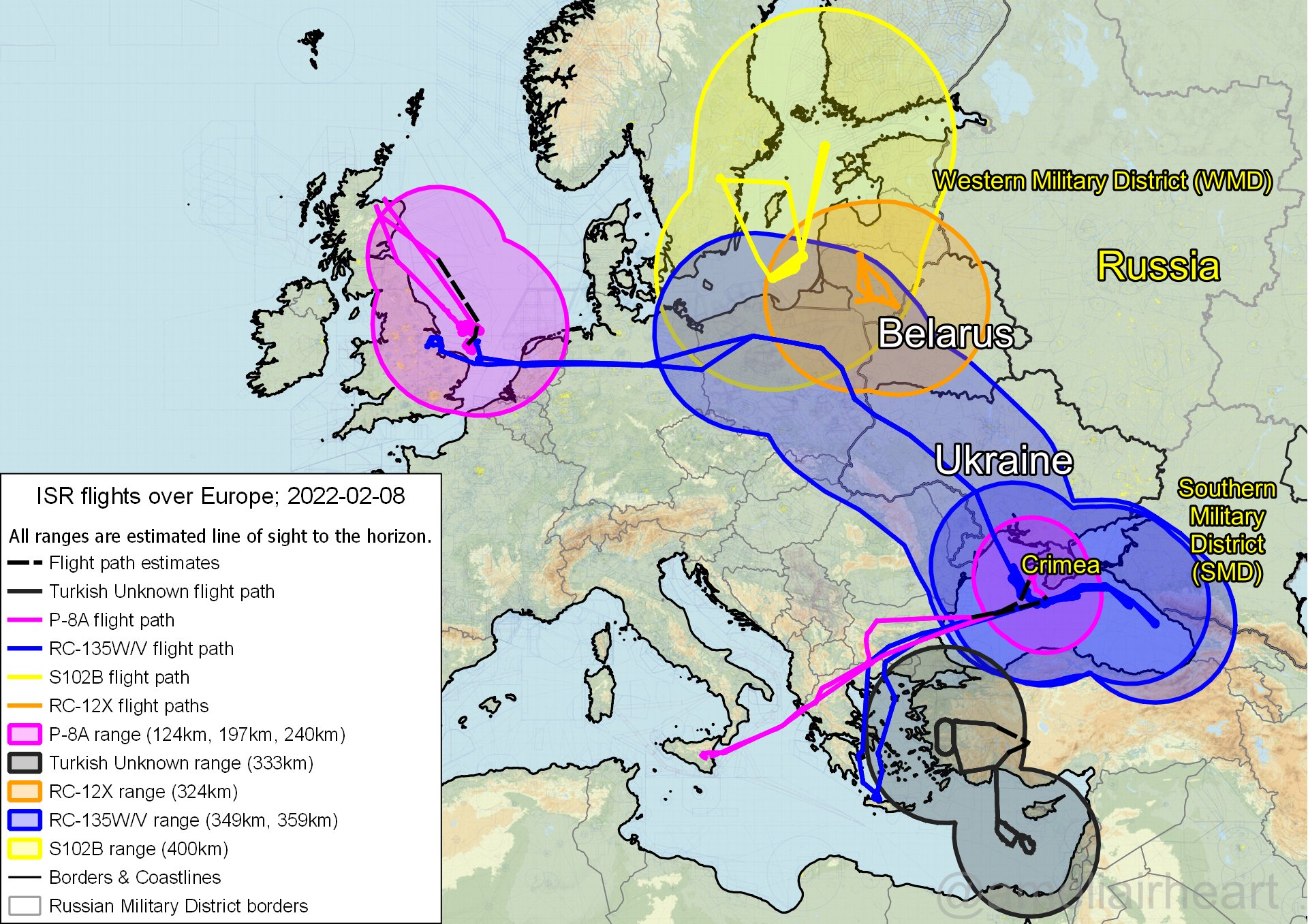
Between the U.S. Navy and RAF fleets, the Poseidon has an extensive footprint in Europe. Recent focuses of activity include the Baltic, the Black Sea, the North Atlantic including the Greenland–Iceland–U.K. Gap, the English Channel, and the Mediterranean. While RAF Poseidons are based at RAF Lossiemouth in Scotland, the U.S. Navy examples typically operate from Sigonella. Like the Rivet Joint and Global Hawk, the Poseidon is a regular visitor to the Black Sea.
RC-12X
A twin-turboprop, the U.S. Army’s RC-12X Guardrail Common Sensor (GRCS) is a smaller, shorter-range intelligence-gathering aircraft, but one that’s been notably active of late in the European theater. Based on the popular Beechcraft King Air light utility aircraft, the RC-12X is fitted with signals intelligence equipment that allows it to find and listen in on enemy communications. In contrast to previous Guardrail configurations, the RC-12X doesn’t just deal in communications intelligence (COMINT) anymore but offers broader-spectrum signals intelligence/electronic intelligence capabilities. So much so in fact that the Army described it as far back as 2010 as having “near-national level sensor capabilities.”
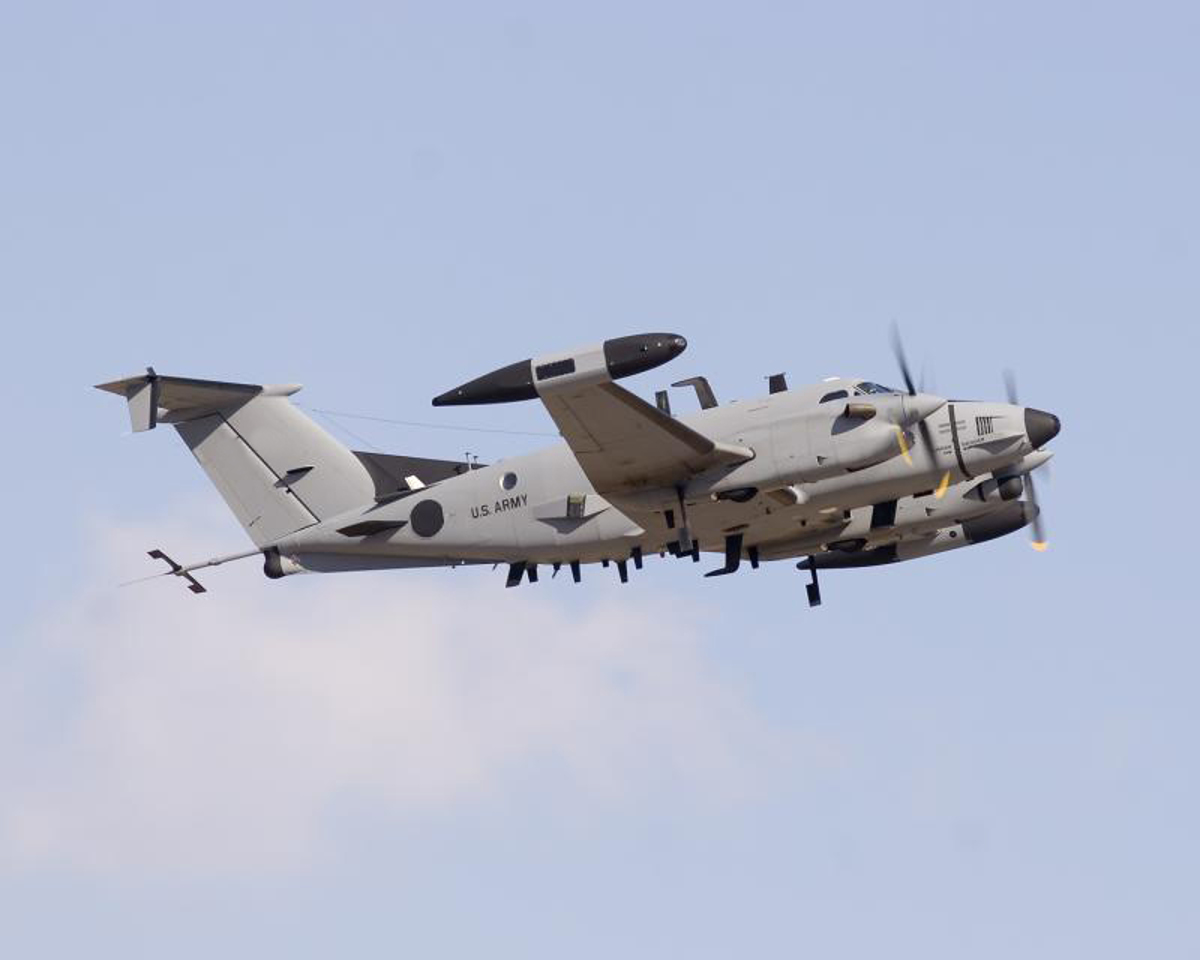
Recently, up to three RC-12X aircraft have been active each day, their areas of interest clearly focused upon Ukraine and Kaliningrad. Flight-tracking software records routes within Lithuanian airspace that take the aircraft up and down the border with Kaliningrad as well as close to the frontier with Belarus.
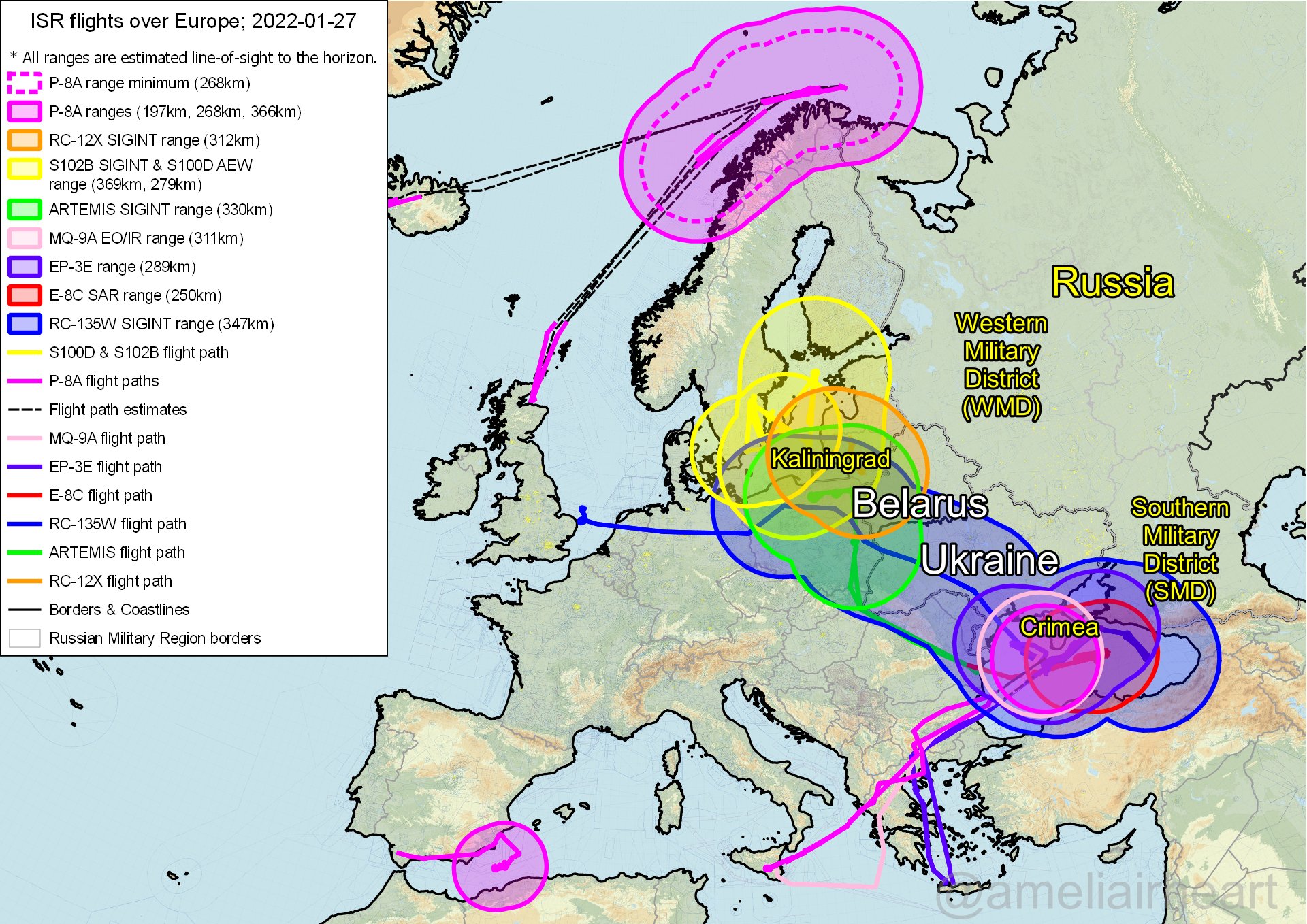
ARTEMIS
Based on an adapted, contractor-owned and operated Bombardier Challenger 600/650 business jet, the ARTEMIS is part of a U.S. Army test program that is helping develop sensors for the future High Accuracy Detection and Exploitation System, or HADES, the service’s next-generation airborne intelligence, surveillance, and reconnaissance (ISR) system.
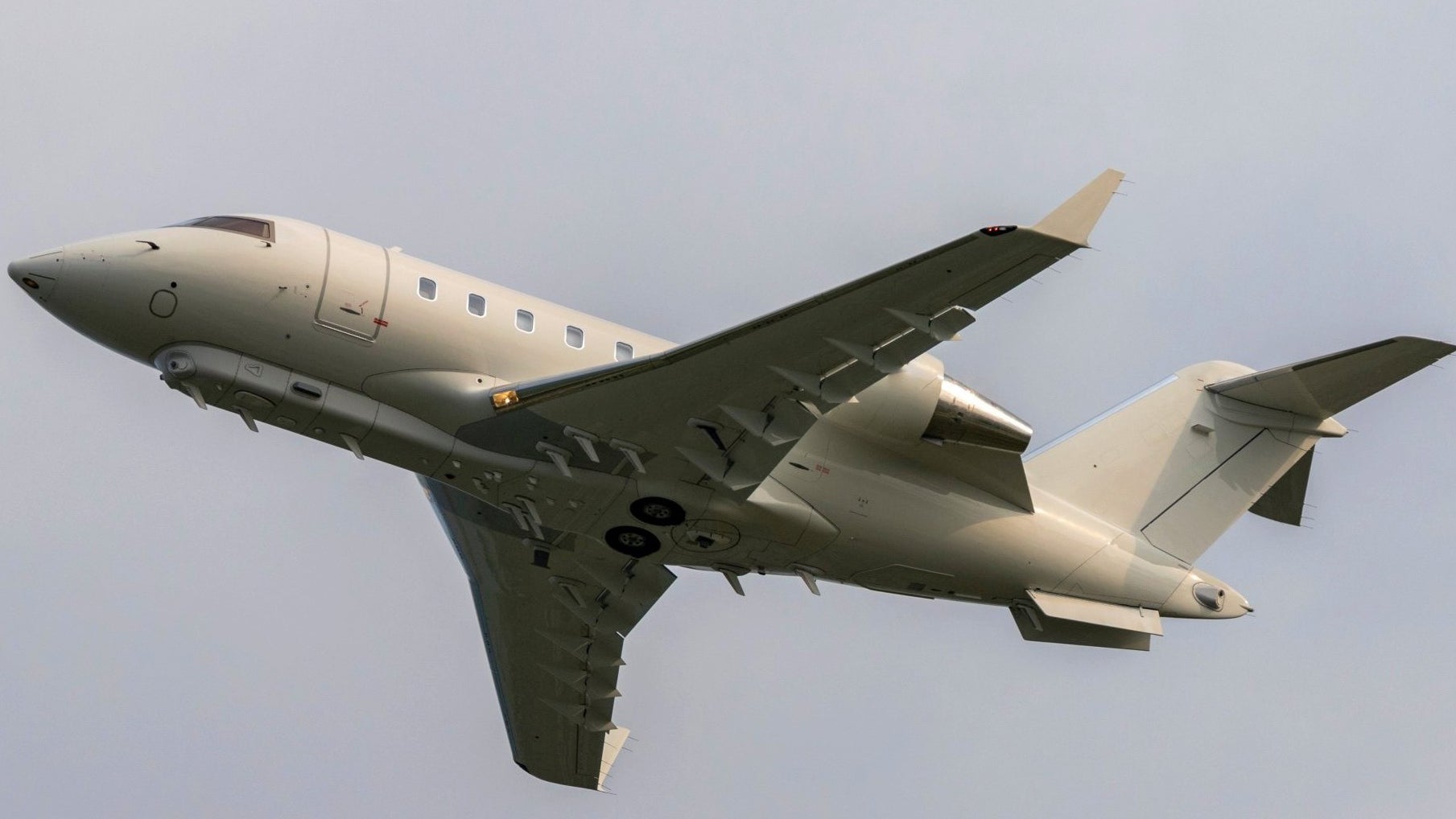
Despite its trials role, the ARTEMIS, or Airborne Reconnaissance and Targeting Multi-Mission Intelligence System, has been deployed to both Europe and Japan in recent months, the Army having made public statements about Europe, in particular, providing a good place to operationally test ARTEMIS, even before the current crisis around Ukraine.
According to an official contracting notice, the ARTEMIS is intended to demonstrate “standoff operations to detect, locate, identify and track critical targets for the ground commander.”
Under its High Accuracy Detection and Exploitation System, or HADES, effort, the Army is planning on fielding an airborne ground-surveillance radar with SAR and GMTI functions, essentially replicating some of the capabilities of the E-8C. ARTEMIS is an early facet of this growing initiative.
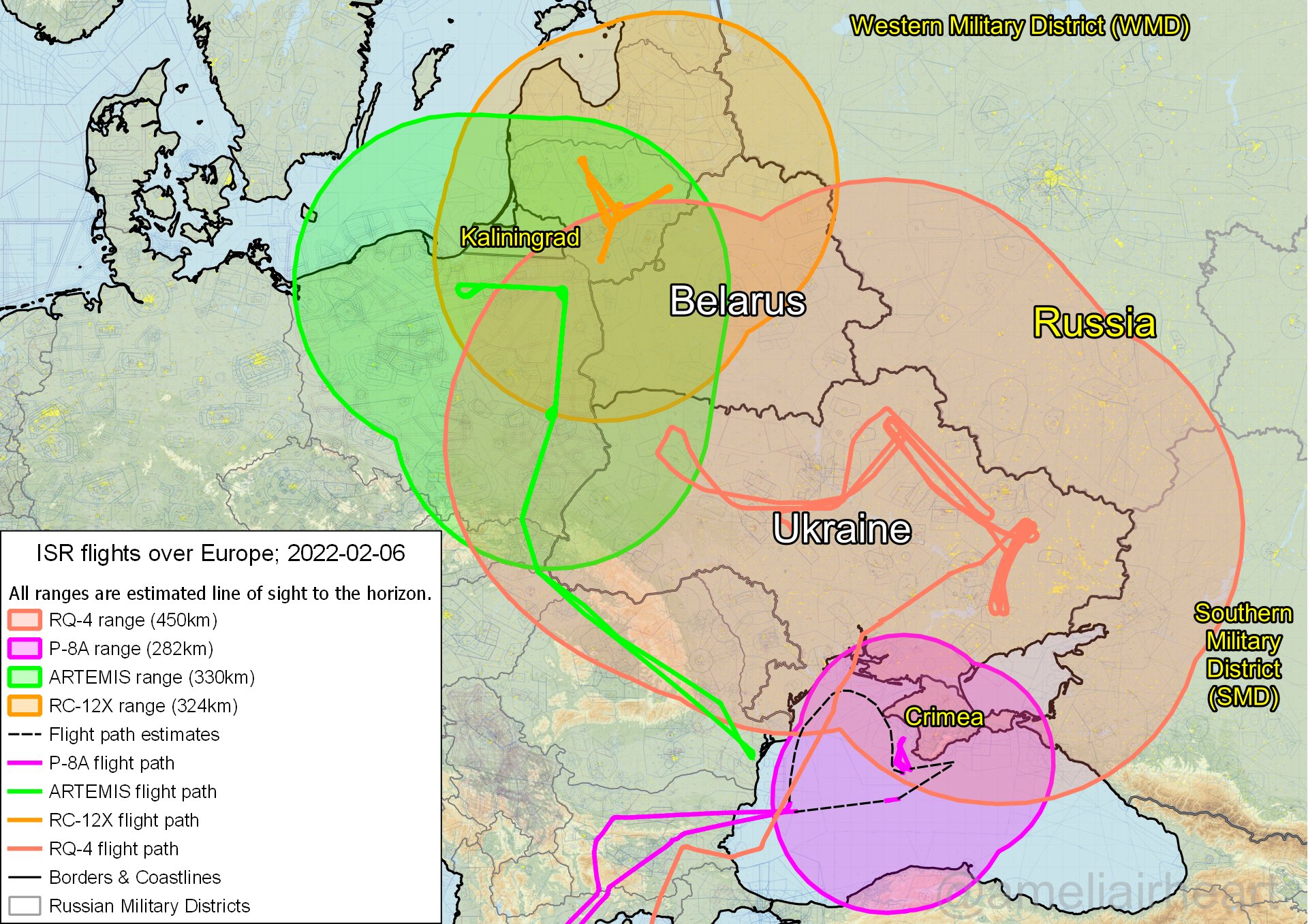
Flight-tracking software indicates that the ARTEMIS has been regularly flying overland through Eastern Europe, from the Baltic States in the north to Romania in the south. This brings it into proximity with the borders of Kaliningrad, Belarus, and Ukraine. Other routes are flown over water, taking the aircraft out over the Black Sea and close to Crimea, from its operating base at Mihail Kogălniceanu in Romania.
RQ-4D Phoenix
NATO’s Global Hawk variant is the RQ-4D Phoenix, which shares a high degree of commonality with the U.S. Air Force’s Block 40 RQ-4B. Significantly, the current crisis surrounding Ukraine marks the first major operational use of the NATO Global Hawk fleet, which declared initial operating capability just a year ago.
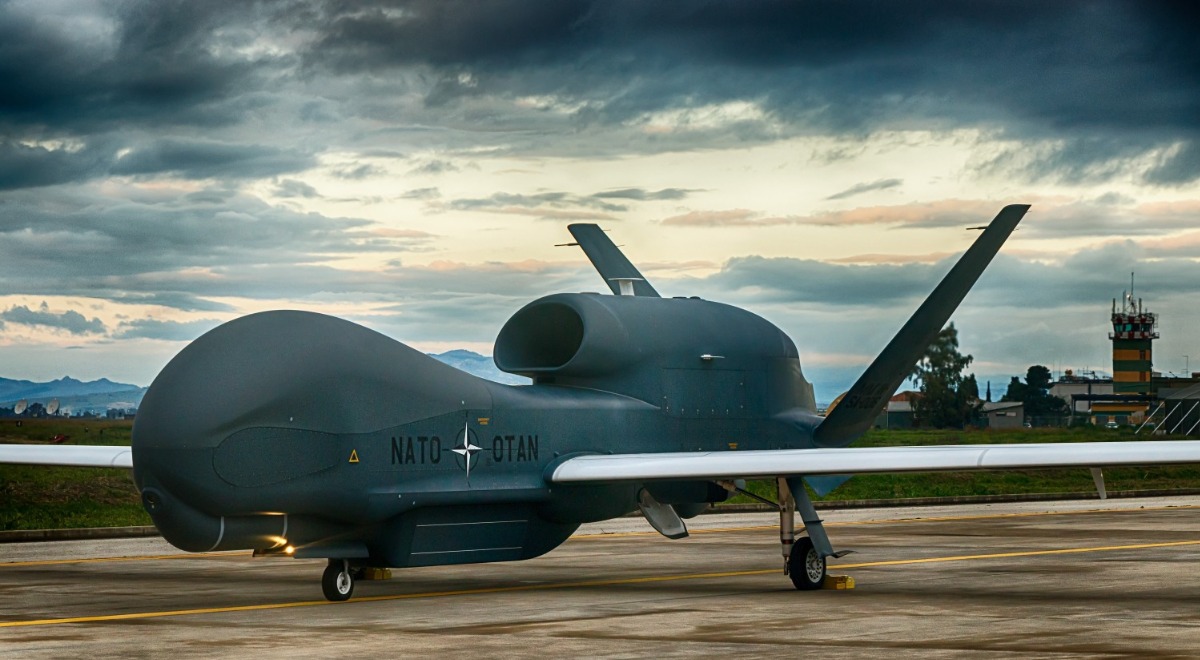
Recently, the NATO fleet of five Phoenix drones has completed long-duration missions over Poland, and possibly also Ukraine, as well as over the Mediterranean, before entering the Black Sea. Some of these missions over the Black Sea have a duration of more than 24 hours.
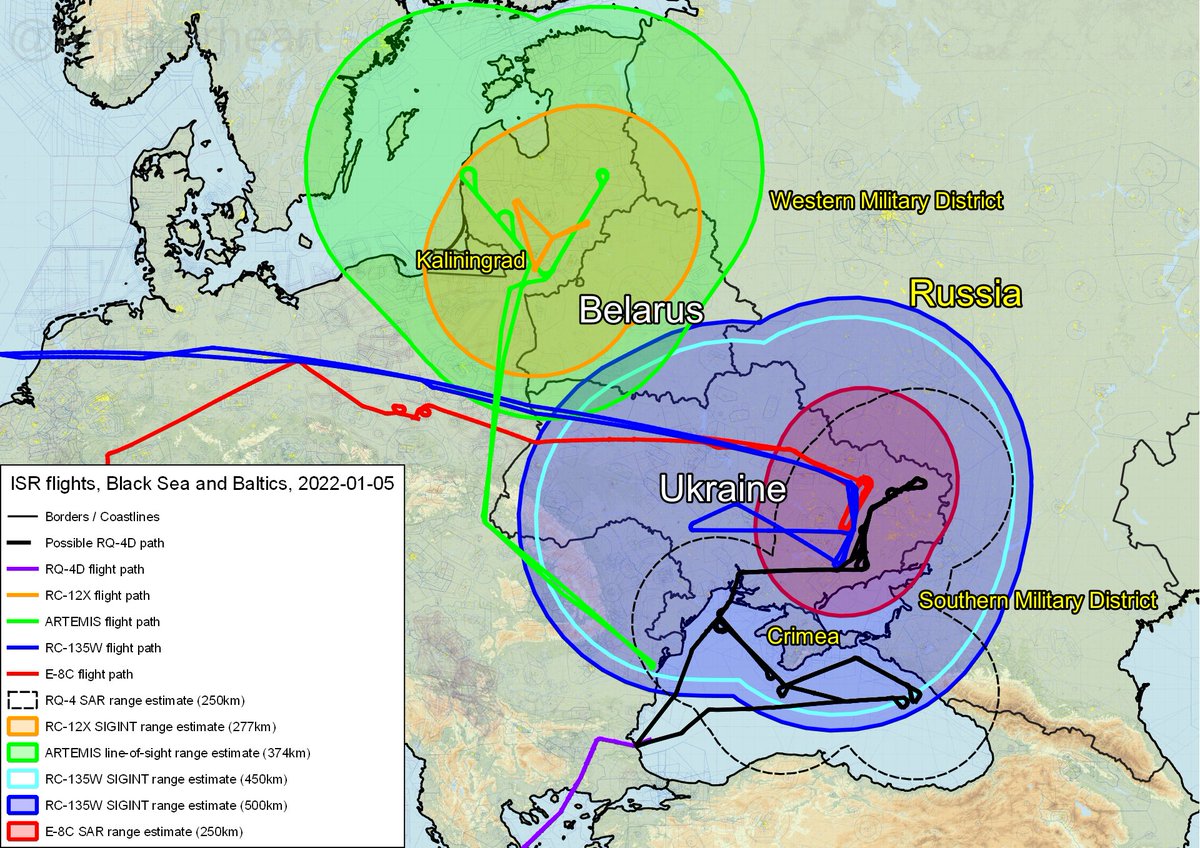
Bayraktar TB2
Within Ukraine itself, one of the few intelligence-gathering assets to appear with any frequency on flight-tracking software is the Turkish-made TB2 drone, a recent acquisition by Kyiv that’s been assessed as a potentially vital tool in a potential conflict with Russia. While the TB2 is best known as a strike platform, targeting mobile surface-to-air missile launchers and other hardware during operations in Libya, Syria, and Nagorno-Karabakh, it’s also equipped for reconnaissance, with an electro-optical/infrared sensor turret. It can also be outfitted with signals intelligence payloads, as well.
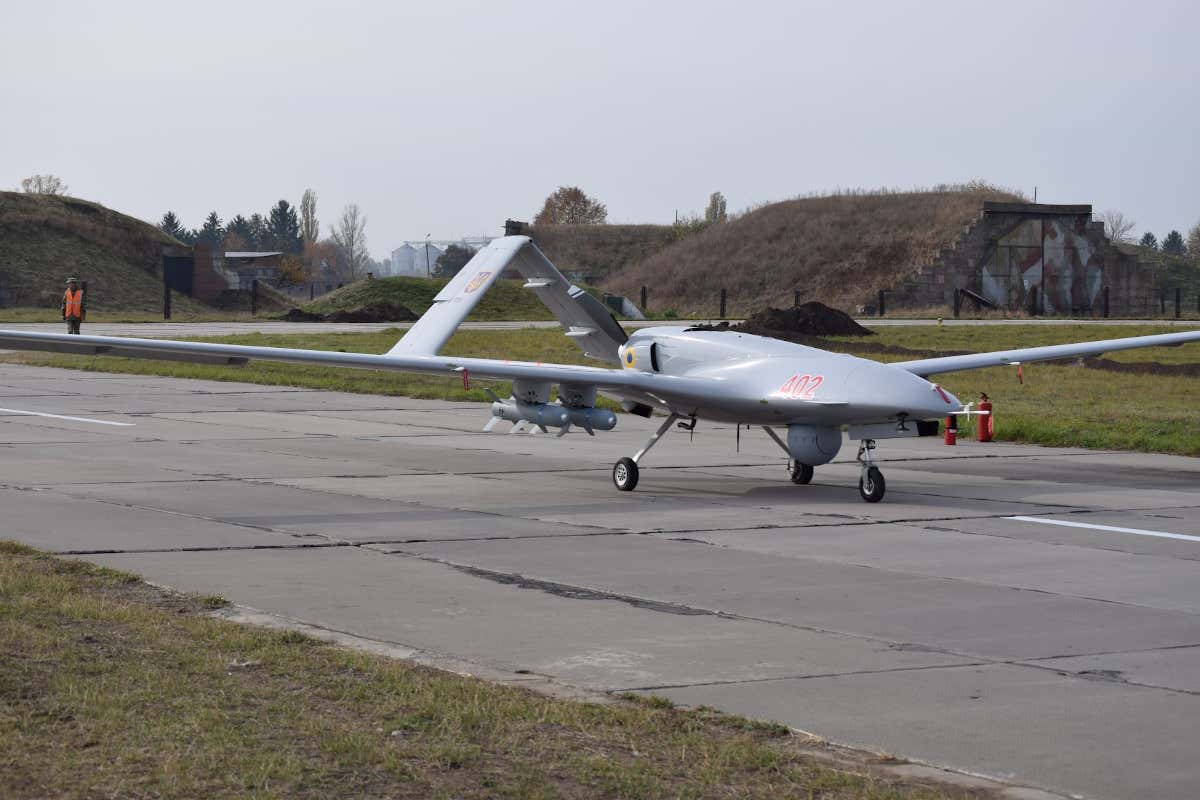
Ukrainian officials first disclosed that TB2s were conducting reconnaissance flights in the Donbas region in April 2021 and the drones have appeared recently operating further west, as well as close to the border with the disputed territory of Crimea. On at least one occasion, however, TB2s have been noted flying close to the Russian border in the northeast of the country.
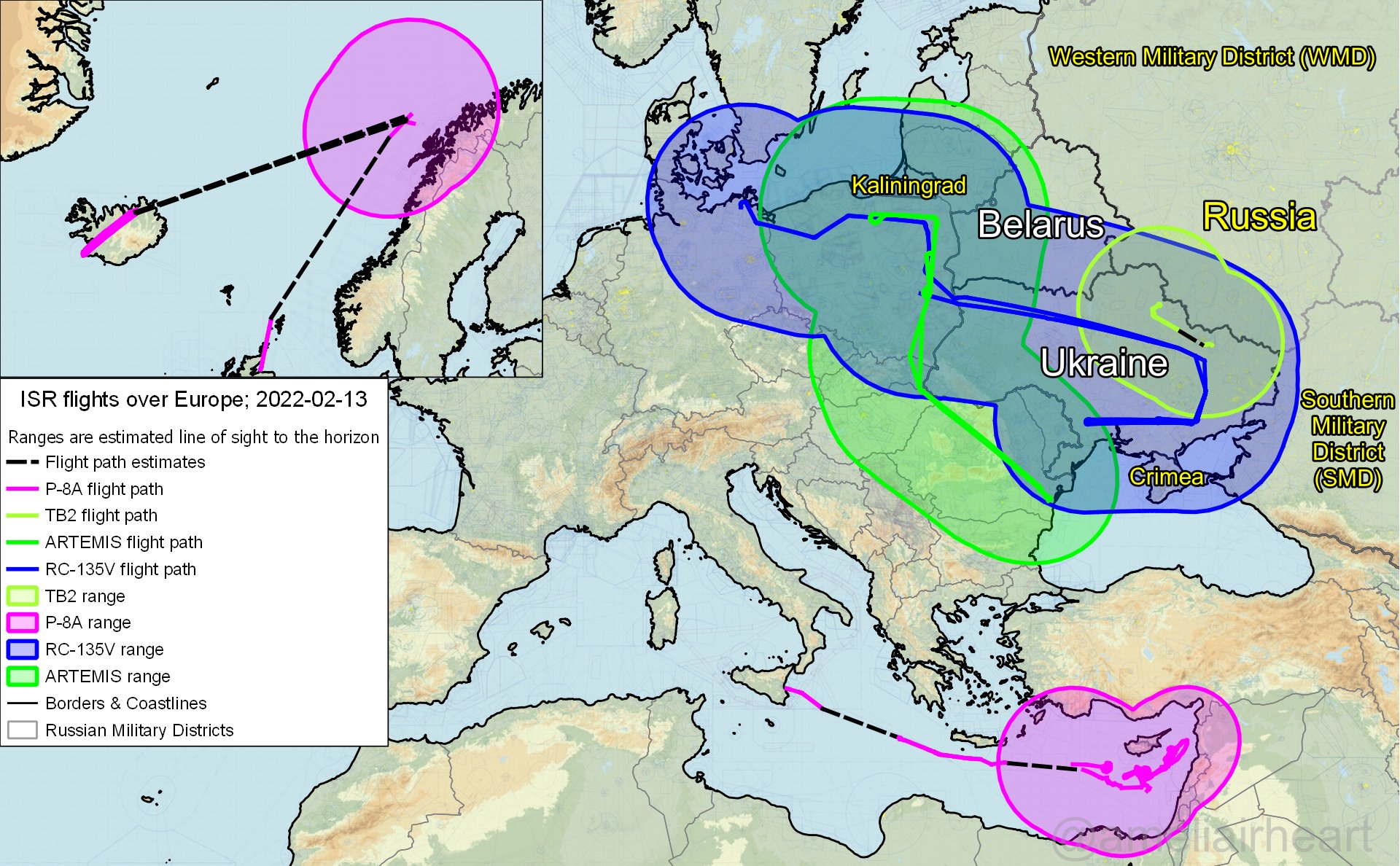
While this rundown focuses on the intelligence-gathering aircraft that have been involved in monitoring Russian military movements around Ukraine specifically, it’s worth noting that most of these platforms are also keeping tabs on Russia’s heavily militarized zones elsewhere in Eastern Europe, too. Overall, the breadth of different platforms and capabilities that are now involved reflects the very real demand to attempt to make sense of a volatile situation that could potentially have repercussions across the region.
At the same time, the ongoing missions reinforce the importance of persistent, near-real-time intelligence in this situation, although surveillance aircraft are just one component of a broader intelligence picture that also includes space-based and maritime systems, as well as assets on the ground, including human intelligence, both inside and outside of Russia. Another point to consider is that these flights also carry the risk of harassment by Russian aircraft. Intelligence-gathering sorties in international airspace are typically shadowed and miscalculations are always a possibility, with the potential for escalation as a result.
Ultimately, flights such as these will continue at their current pace as long as Western officials remain concerned that a Russian invasion of Ukraine could be imminent, with the potential for a further increased tempo of such missions should the situation deteriorate further. But even without a direct crisis at hand, they will keep regular tabs on the Russian order of battle and its forces’ disposition in and around Ukraine and the greater Black Sea region just as they have done for years now.
Contact the author: thomas@thedrive.com
